Welcome to Berlin! Here is a city that never stops surprising its visitors. Art, history, cuisine, and vibrant nightlife intersect here in fascinating ways. From its gritty past to its cutting-edge creative scene, Berlin is all about diversity—and embracing the unexpected. You’re reading this because you’re keen to discover Berlin’s top things to do. Maybe you’re a history buff eager to see remnants of the Berlin Wall. Or you’re a foodie ready to dive into cutting-edge culinary trends. Perhaps you’re looking for an easy-to-digest travel guide that balances must-see landmarks with lesser-known gems. We know you value clarity, practical tips, and a sense of authenticity. That’s exactly what we’re here for.
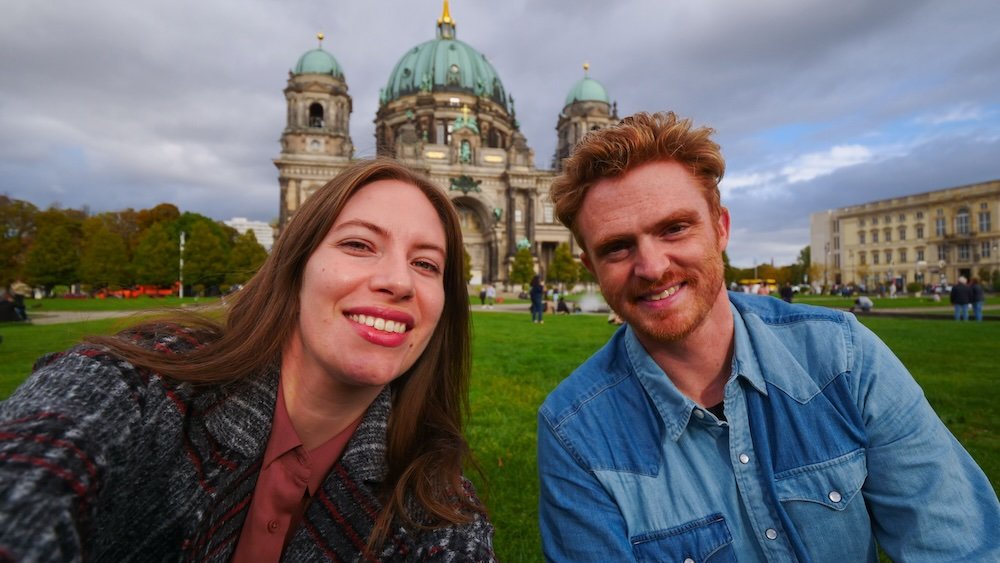
Why Berlin?
Travel planning can be overwhelming. Especially in a sprawling city like Berlin. Where do you even begin when the options range from ancient artifacts to modern street art? Maybe you’re concerned about navigating the U-Bahn or unsure if you’ll find enough vegetarian dining spots. You might also fear hidden tourist traps that burn a hole in your wallet. Or maybe you’re worried you’ll focus on the usual top 5 attractions and miss out on the city’s secret corners. We get it—Berlin is massive, and you only have so much time.
Our Travel Video From Berlin, Germany on Samuel and Audrey YouTube Channel: Nomadic Samuel + That Backpacker hosting
This guide is crafted for anyone hungry for an in-depth Berlin adventure. Maybe you’re a history lover drawn to WWII and Cold War sites. Perhaps you’re a digital nomad looking to explore hipster neighborhoods and lively co-working spaces. Families, backpackers, and couples alike can glean valuable insights from our curated list of things to do. We’re here to cater to diverse interests while ensuring that Berlin’s unique spirit shines through.
Berlin is a city of contrasts—raw and refined, historic and forward-thinking. Ready to begin? Dive in as we highlight the top 10 things to do in Berlin, followed by food tips, tour recommendations, accommodation insights, and more. Let’s get started.
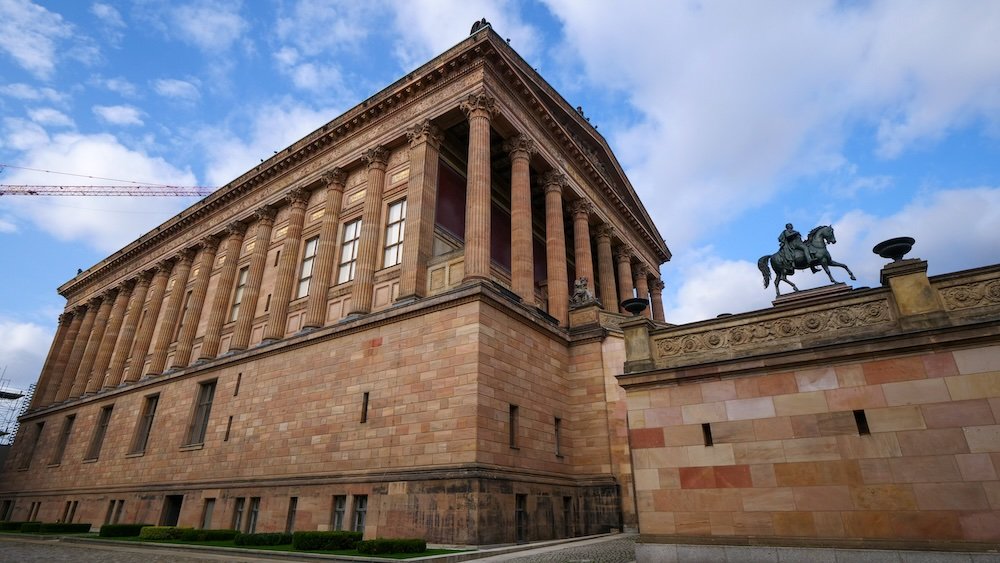
Top 10 Things To Do in Berlin, Germany For Visitors
Berlin is bursting with history, creativity, and a rebellious spark. It’s a place where things to do range from touring world-class museums to chilling in urban parks filled with street music. Below are ten can’t-miss experiences.

1. Museum Island
Museum Island, or Museumsinsel, is a UNESCO World Heritage Site that features five incredible museums packed onto a small river island in the heart of Berlin. You’ll encounter treasures like the bust of Nefertiti at the Neues Museum and ancient Greek architecture in the Pergamon Museum. Strolling from one grand structure to the next feels like stepping into different eras of world history. The area itself is scenic, bordered by the River Spree and often visited by buskers and local artists. Plan to spend at least half a day here if you want to dive deep into multiple collections. It’s a haven for history buffs and casual cultural explorers alike.
- Highlight Exhibits: The Pergamon Altar, the Ishtar Gate, and the Nefertiti bust.
- Ticket Tip: A Museum Island day pass can save you money if you’re visiting more than one museum.
- Nearby Relaxation: Lustgarten Park in front of the Old Museum for a pleasant break.
Tip: Arrive early to avoid long lines, especially in summer when tourist crowds swell.
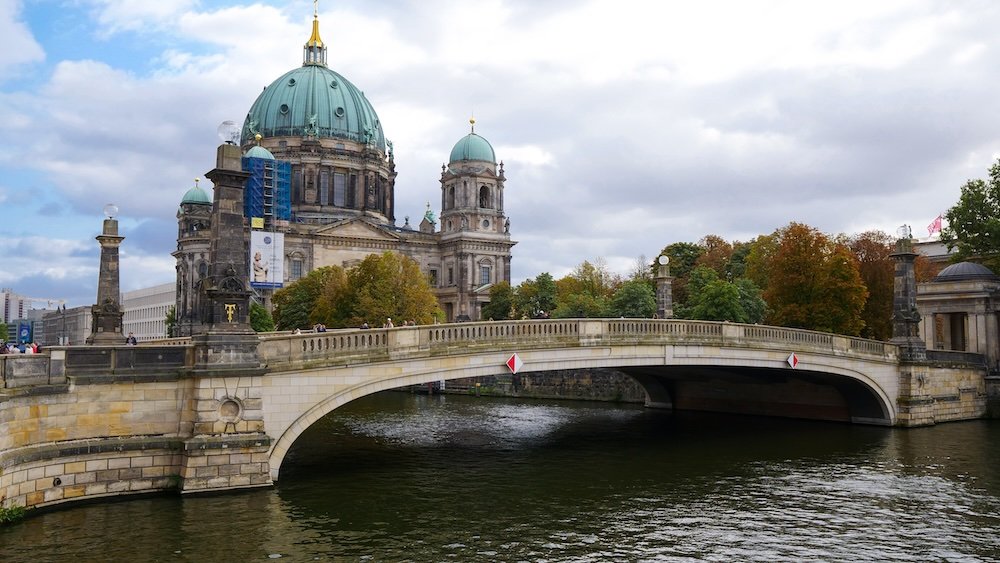
2. Berlin Cathedral
Berlin Cathedral (Berliner Dom) stands proudly on Museum Island, with its striking dome visible from afar. Step inside to marvel at the lavish interior, adorned with mosaics, gilded details, and awe-inspiring stained glass. Climb to the dome’s walkway for sweeping views of central Berlin, including the Fernsehturm (TV Tower) piercing the skyline. Services and concerts occasionally take place here, blending spirituality and community in a regal setting. You can explore the crypt, which houses the royal tombs of the Hohenzollern dynasty. The cathedral’s grandeur showcases Berlin’s past while offering modern-day visitors a space for contemplation.
- Photography: The exterior is a dream for architectural shots—try different angles at golden hour.
- Dress Code: While not strictly enforced, respectful attire is appreciated inside.
- Opening Times: Hours vary on Sundays and during special events, so double-check online.
Tip: Climb the dome’s stairs for one of the best panoramic views in the city.
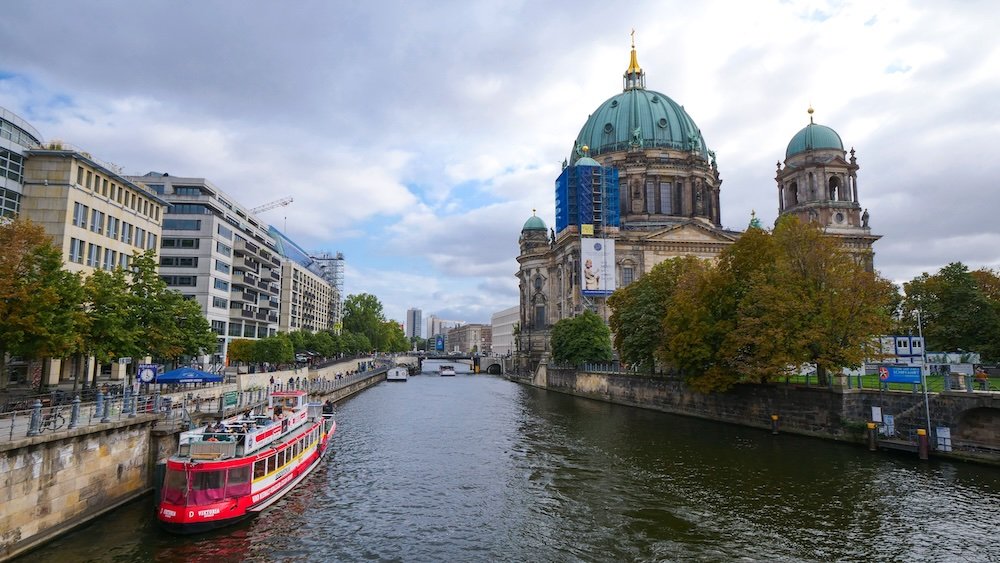
3. Cruise on the Spree River
Drifting along the Spree River offers a relaxing alternative to pounding the pavement. You’ll see iconic landmarks like the Reichstag, Museum Island, and the Berliner Dom from a fresh, water-level perspective. Most cruises include an audio guide explaining historical snippets, architectural highlights, and quirky city anecdotes. Cruises vary in length, with some offering sunset rides for a more romantic ambiance. It’s also a great way to rest your feet between hectic museum visits. With gentle breezes and panoramic vistas, a Spree River cruise can be a surprising highlight in a bustling city.
- Boarding Points: Popular piers are located near Friedrichstraße, Hackescher Markt, and Berlin Cathedral.
- Variety: Some cruises include meals or drinks, so pick one that matches your vibe.
- Season: Summer is prime time, but winter tours can be cozy with heated cabins.
Tip: Check for combo tickets that bundle a Spree cruise with another attraction like the TV Tower.
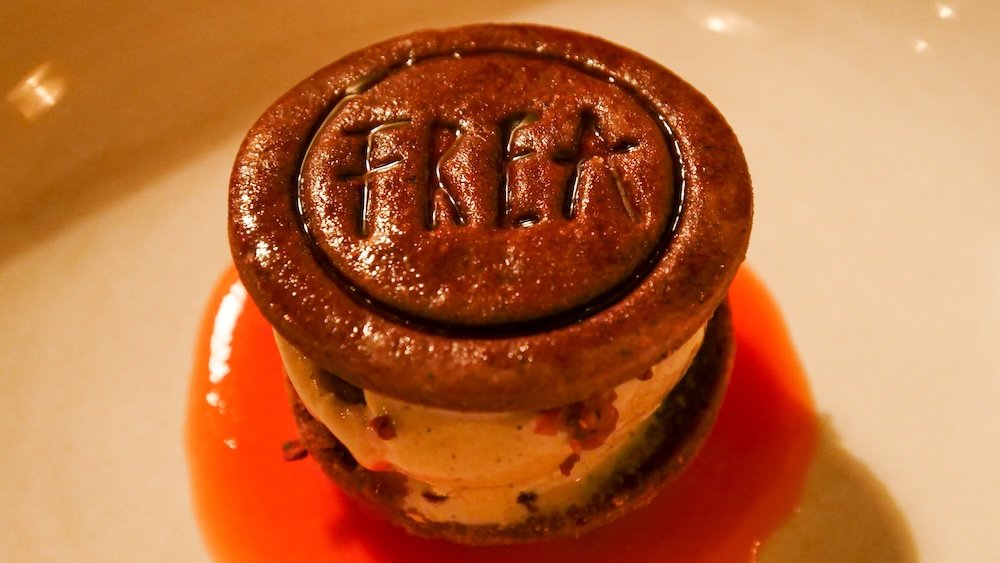
4. Dinner at Frea (Vegan and Waste-Free Restaurant)
Frea is more than just a restaurant; it’s an innovative dining concept that’s caught Berlin’s attention. They focus on creating delicious vegan meals while producing zero waste, which aligns perfectly with Berlin’s eco-conscious spirit. The menu changes regularly, showcasing seasonal produce and creative plant-based dishes. Even if you’re not vegan, the flavors and textures might surprise you, proving that sustainability and tastiness can go hand in hand. The interior has a minimalist yet welcoming vibe that makes you want to linger over dessert. Dining at Frea is not just about filling your stomach—it’s about engaging with a forward-thinking lifestyle movement.
- Highlights: Unique twists on classic dishes, fresh bread baked in-house, and rotating specials.
- Reservations: Highly recommended, as tables fill up fast.
- Atmosphere: Casual and warm, with staff eager to discuss their zero-waste philosophy.
Tip: Ask about their composting system—it’s a cool glimpse into how they reuse kitchen scraps.

5. Berlin by Bike
Berlin is exceptionally bike-friendly, with wide lanes, thoughtful signage, and plenty of rental spots. Pedaling through neighborhoods like Prenzlauer Berg or Kreuzberg gives you a sense of local life that’s hard to catch on a bus or train. You’ll zip past vibrant street art, cozy cafés, and green spaces. Many guided bike tours also exist, offering insights into Berlin’s history—from Cold War politics to modern urban development. Cycling is ideal for covering more ground than walking, but you still get that up-close perspective you won’t find in a car. It’s an eco-friendly, budget-friendly, and fun way to soak in the city vibe.
- Rental Options: Try Donkey Republic, Nextbike, or local bike shops.
- Safety Gear: Helmets aren’t mandatory for adults but are strongly recommended.
- Best Times: Mornings or late afternoons to avoid heavier traffic.
Tip: Follow the bike lanes diligently to avoid getting in the way of buses or pedestrians.
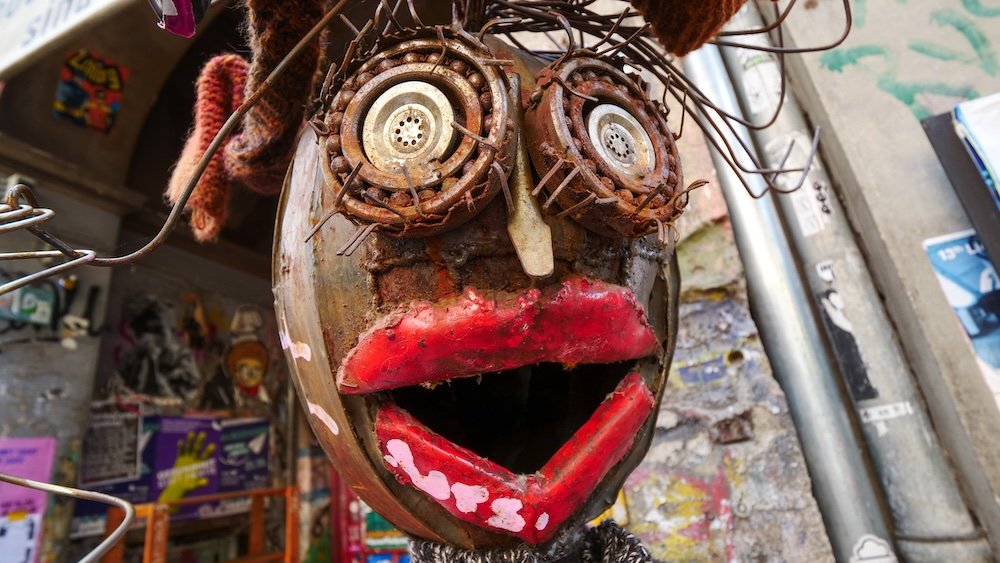
6. Mauerpark
Mauerpark brims with life, especially on Sundays when it hosts a sprawling flea market and public karaoke sessions. The park sits in a former border zone that once divided East and West Berlin. Today, it’s a place where Berliners and visitors alike come to relax, shop, and revel in the creative spirit. Stalls sell vintage clothes, handcrafted jewelry, and all sorts of odd treasures. Street food vendors serve international snacks, and you can munch while enjoying live music or just people-watching. Mauerpark captures Berlin’s knack for turning a historical scar into a communal haven.
- Sunday Karaoke: The amphitheater draws huge crowds cheering on brave (and sometimes talented) singers.
- Flea Market Finds: From retro furniture to antique trinkets, you never know what you’ll score.
- Street Art: Colorful murals and graffiti reflect the park’s playful energy.
Tip: Arrive early if you want to beat the flea market rush and snag the best bargains.
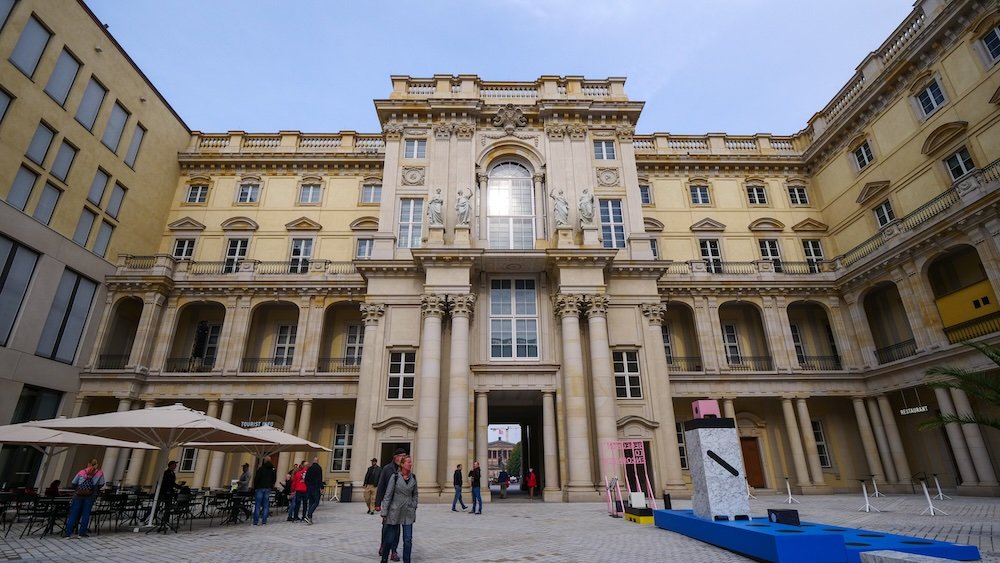
7. Humboldt Forum
Housed in the newly reconstructed Berlin Palace, the Humboldt Forum is a cultural venue that merges world history, art, and science. Inside, you’ll find exhibitions covering everything from Asian art collections to contemporary installations exploring global themes. It aims to foster dialogue about colonial histories, cultural exchange, and modern societal challenges. Interactive displays and multimedia elements keep the space engaging for all ages. The building itself is a conversation starter—part meticulous historical façade, part sleek modern interior. If you’re into museums that make you think, Humboldt Forum will leave you with new perspectives on cultural identity.
- Highlights: Ethnological Museum and Museum of Asian Art collections, plus rotating special exhibits.
- Entry: Some exhibitions are free; others require tickets.
- Architecture: A blend of baroque-style exteriors and minimalist, contemporary interiors.
Tip: Check the events calendar for lectures, workshops, or guided tours that dive deeper into the exhibits.

8. Indian Street Food
In a city famed for doner kebabs and currywurst, Indian street food is often overlooked. Yet Berlin’s multicultural scene shines in places like Markthalle Neun or specialized food trucks dishing out spicy chaats, dosas, and samosas. Authentic flavors combine with local twists, creating a unique fusion that appeals to Berlin’s adventurous palates. Seek out rotating pop-ups or small eateries like Chutnify or Taste of India. You’ll likely find lines of enthusiastic locals waiting for a tangy or fiery treat. Sampling Indian street food here offers a window into Berlin’s global gastronomic tapestry.
- Popular Dishes: Masala dosa, pani puri, and various thali combos.
- Vegan-Friendly: Many Indian dishes are naturally plant-based.
- Price Range: Often more affordable than sit-down restaurants, making it easy to try multiple items.
Tip: Ask for spice levels if you’re sensitive; Berliners often love extra heat, but you can request milder versions.
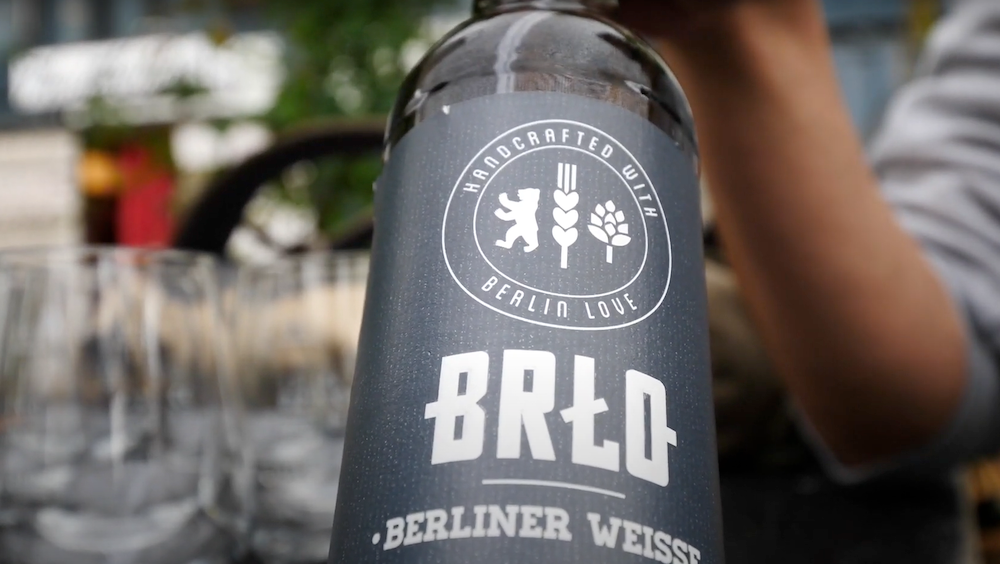
9. Beer Tasting at BRLO Brewery
Berlin’s craft beer revolution is alive and kicking, and BRLO Brewery is at the forefront. Located in a stylish container setup near Gleisdreieck Park, BRLO specializes in small-batch beers that span classics to bold experimental brews. Tasting flights let you sample everything from pale ales to stouts while learning about the brewery’s ethos of sustainability and local sourcing. The on-site beer garden is perfect for sunny afternoons, with hearty German dishes like pretzels and sausages paired with your pint. Tours offer behind-the-scenes insights into the brewing process. It’s a fun, laid-back spot to chill and appreciate Berlin’s contemporary brewing culture.
- Outdoor Seating: Ideal in warmer months, combining fresh air and cold beer.
- Food Pairings: Try their seasonal menu for perfect beer-food combos.
- Souvenirs: Purchase bottled or canned beers to take home a taste of Berlin.
Tip: Check for special events like live music nights or themed tasting sessions.

10. Berlin Food Tour (Kreuzberg)
A food tour in Kreuzberg is one of the best ways to experience Berlin’s multicultural soul. It’s a neighborhood where Turkish bakeries sit next to hip vegan cafés, and where old-school German pubs share streets with trendy fusion restaurants. A guided tour will walk you through flavorful stops featuring everything from Middle Eastern falafels to German craft beer. You’ll also learn about Kreuzberg’s punk-rock past, street-art culture, and ongoing gentrification debates. Tasting the local fare while soaking in the district’s energy offers a full-on sensory experience. It’s the perfect finale to a day exploring Berlin, especially if you love exploring new flavors and community stories.
- Tour Styles: Some focus on specific cuisines, while others mix global tastes.
- Pacing: Wear comfy shoes; you’ll be strolling between multiple food stops.
- Cultural Insights: Guides often share personal anecdotes about Kreuzberg’s ever-evolving character.
Tip: Come hungry—food tours often include more snacks and bites than you’d expect.
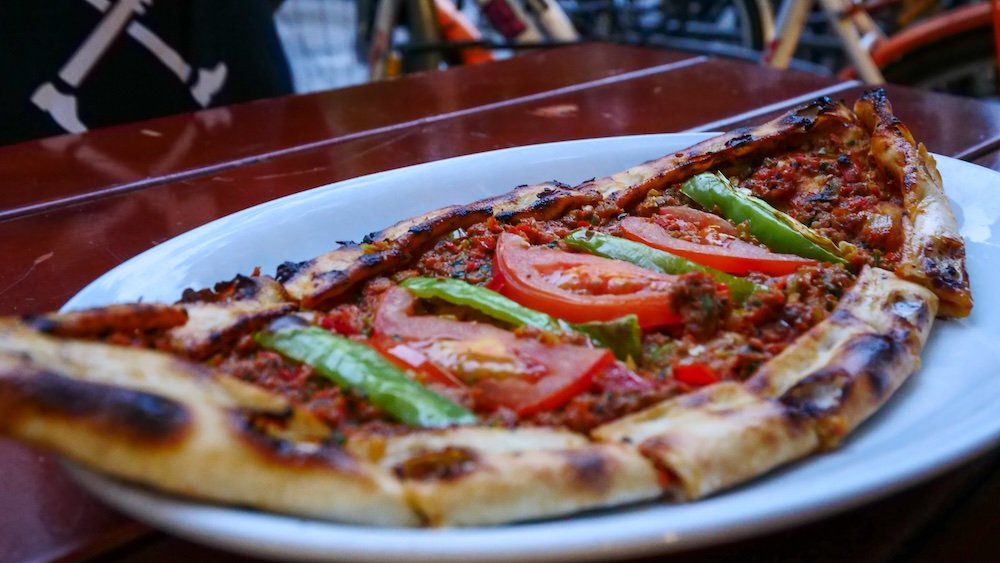
What To Eat and Drink in Berlin, Germany
Berlin’s culinary landscape is as diverse and ever-evolving as the city itself. You’ll find old-school German classics alongside global street food, vegan innovations, and Michelin-starred fine dining. This travel guide section offers a snapshot of the things to do for your taste buds. Whether you’re craving a quick snack or a slow, indulgent meal. Let’s dig into Berlin’s delectable food and drink scene.
Classic German Fare
- Currywurst: Berlin’s iconic fast food is a grilled or fried pork sausage slathered in spiced ketchup and sprinkled with curry powder. You’ll find it at kiosks and snack bars all over the city. Pair it with fries for a hearty street treat.
- Schnitzel: Thinly pounded and breaded cutlets, typically pork or veal, served with a side of warm potato salad or fries. A must-try if you want a taste of traditional German comfort food.
- Pretzels and Bread Rolls: Bakery culture is strong in Berlin, so don’t miss out on fresh-baked pretzels or Brötchen in the morning.
Tip: Look for Imbiss stands in busy neighborhoods, where you’ll often find the most authentic and budget-friendly versions of these classics.
Global Influences
- Turkish Cuisine: Berlin has the largest Turkish population outside of Turkey, so expect top-notch döner kebabs, lahmacun (Turkish pizza), and börek pastries. Head to districts like Kreuzberg or Neukölln for an array of authentic options.
- Asian Fusion: From ramen bars to Vietnamese cafés, Asian-inspired flavors are woven into Berlin’s food tapestry. Many places put a unique spin on dishes, mixing local ingredients with traditional recipes.
- Middle Eastern Street Food: Falafel joints, hummus spots, and Syrian bakeries abound, reflecting Berlin’s cultural mosaic.
Tip: Try a kebab from the iconic Mustafas Gemüse Kebap near Mehringdamm—long lines, but a local legend.
Vegan and Vegetarian Delights
- Plant-Based Innovation: Berlin is often hailed as one of Europe’s vegan capitals, featuring everything from casual burger spots to gourmet vegan restaurants like Frea.
- Vöner (Vegan Döner): A playful twist on the classic döner kebab, made with seitan or soy-based fillings. Many shops also offer vegan sauces like garlic mayo or spicy chili.
- Veggie Markets: Weekly farmers’ markets, such as the one at Kollwitzplatz, offer organic produce and artisanal vegan pastries.
Tip: Check out Markthalle Neun for a rotating lineup of vegan stalls during Street Food Thursdays.
Sweet Treats
- German Cakes: Indulge in Black Forest cake, cheesecake, or a decadent slice of Sachertorte at a local café. Cafés often have cozy interiors perfect for a break from sightseeing.
- Berliners (Doughnuts): Known locally as Pfannkuchen, these sugar-coated doughnuts filled with jam are a Berlin staple—just be prepared for confusion since “Berliner” is used differently across Germany.
- Ice Cream: Artisan gelato shops are everywhere, offering flavors from classic vanilla to vegan matcha-lime.
Tip: Save room for a midday coffee and cake—a beloved German tradition called “Kaffee und Kuchen.”
Beer and Beverages
- Craft Beer Scene: While Germany is famous for traditional lagers, Berlin’s craft beer surge brings new flavors and experimental brews. Check out breweries like BRLO or Vagabund.
- Berliner Weisse: A tangy, low-alcohol wheat beer often served with a shot of raspberry or woodruff syrup. It’s a sweet-and-sour summer favorite.
- Club Mate: For a non-alcoholic caffeine kick, try this yerba mate-infused soda adored by the city’s club-goers and startup crowd.
Tip: Take your empty bottles to a Späti (late-night shop) to get some cash back through Germany’s recycling deposit system.
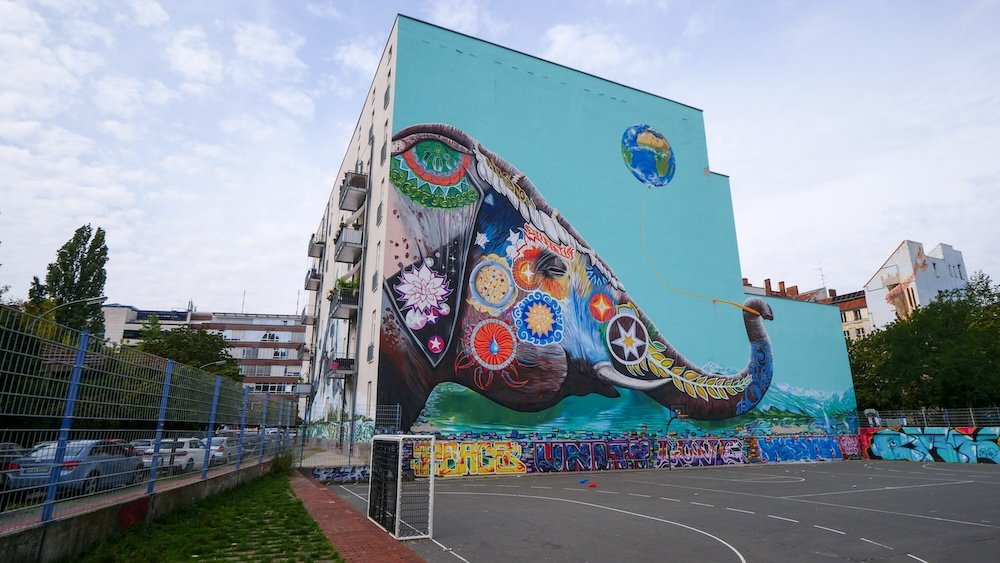
Tours For Visitors To Berlin, Germany
Taking a tour can transform an ordinary trip into a deeply informative adventure. Berlin’s tours span history, architecture, street art, gastronomy, and more, ensuring you’ll find things to do that match your interests. Below are some tour ideas that combine education, fun, and authentic local experiences—perfect for any travel guide to Germany’s capital.
Historical Walking Tours
Berlin’s history is complex, and historical walking tours help make sense of it all. Knowledgeable guides lead you through key landmarks such as the Brandenburg Gate, the Reichstag, and spots along the former Berlin Wall. You’ll hear anecdotes about everyday life in divided Berlin, plus stories of resistance and reunification. Most tours last a couple of hours, offering a decent workout along with your history lesson. It’s a great introduction if you’re short on time but want a comprehensive overview. These tours often weave in modern Berlin’s quirky facts and cultural trivia, making them both informative and entertaining.
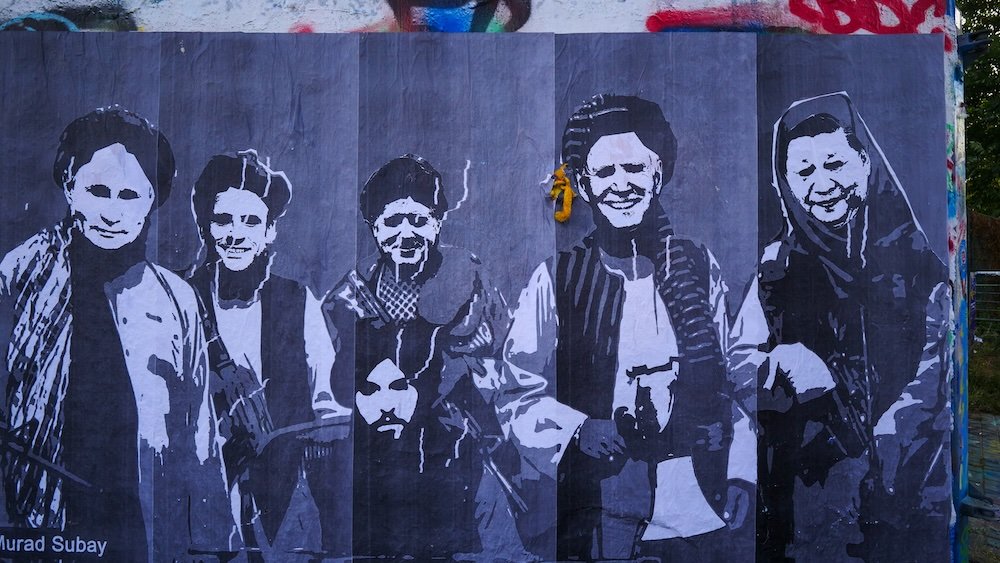
- Top Companies: SANDEMANs New Europe, Original Berlin Walks.
- Key Sites: Checkpoint Charlie, Memorial to the Murdered Jews of Europe, Gendarmenmarkt.
- Price Range: Free/donation-based or around €15–€20 for standard tours.
Tip: Wear comfortable shoes—you’ll likely be on your feet for a while.
Bike Tours
Berlin is extremely bike-friendly, and bike tours offer a fantastic way to explore more territory than a walking tour. Guides typically take you through the city’s spacious avenues, scenic parks, and sometimes hidden backstreets for a local’s perspective. It’s an engaging option if you enjoy being active and want a closer look at different neighborhoods like Friedrichshain or Kreuzberg. Some bike tours focus on street art and graffiti, while others delve into Cold War history. If you’re new to cycling in a big city, don’t worry—Berlin’s infrastructure makes it more approachable than most urban centers.
- Popular Routes: Along the East Side Gallery, through Tiergarten, or around Tempelhofer Feld.
- Group Size: Usually capped for safety; smaller groups mean more personalized experiences.
- Duration: Expect 3–4 hours, including breaks for explanations and photos.
Tip: Bring water and dress for the weather—Berlin can switch from sunshine to drizzle quickly.
Street Art Tours
Renowned for its graffiti and murals, Berlin has entire tours dedicated to showcasing street art. You’ll explore neighborhoods like Mitte, Kreuzberg, and Friedrichshain, spotting iconic works by local and international artists. Guides explain the significance behind certain pieces, discussing social or political themes that often inspire street art in Berlin. You may also visit hidden courtyards or galleries you’d never stumble upon alone. These tours offer a vivid snapshot of contemporary urban culture in a city that’s historically embraced self-expression. It’s a colorful departure from standard sightseeing tours.
- Art Highlights: Works by El Bocho, Banksy sightings, large-scale murals in RAW-Gelände.
- Why It’s Unique: Street art changes fast, so each tour can offer a new perspective.
- Add-On: Some tours include workshops where you can try stencil-making.
Tip: Ask your guide for the latest hotspots—the street art scene is dynamic and constantly evolving.
Food and Drink Tours
We touched on Berlin’s dynamic food scene, but a dedicated food tour can help you discover flavors you’d never find on your own. Companies like Fork & Walk or Secret Food Tours lead you to hidden gems, from Turkish bakeries to modern German bistros. You’ll sample small bites and possibly enjoy a local beer or two. Cultural commentary complements your tastings, offering a deeper understanding of Berlin’s diverse communities. It’s a must if you’re curious about the city’s gastronomic tapestry but don’t know where to begin.
- Duration: Usually 3–4 hours, covering multiple eateries.
- Group Atmosphere: Very social, great for meeting fellow travelers.
- Specializations: Vegan tours, craft beer crawls, neighborhood-specific tours.
Tip: Show up hungry—you’ll get more than just “tastings” at most stops.
Alternative Tours and Workshops
For something off the beaten path, look into alternative tours and workshops that focus on Berlin’s counterculture and creative scene. You might dive into the city’s techno music history, explore abandoned buildings (where allowed), or join a photography workshop capturing Berlin’s edgy charm. There are also specialized workshops for those keen to learn local crafts, from printmaking to modern ceramics. These experiences cater to travelers who want to engage more actively with Berlin’s creative pulse, beyond just sightseeing.
- Examples: Abandoned Berlin tours, DJ workshops, or craft beer brewing sessions.
- Advantages: Personal enrichment and unique skill-building opportunities.
- Considerations: Check safety and legality if exploring any “off-limits” spots.
Tip: Research your tour provider’s credentials to ensure you’re joining a legitimate and safe activity.
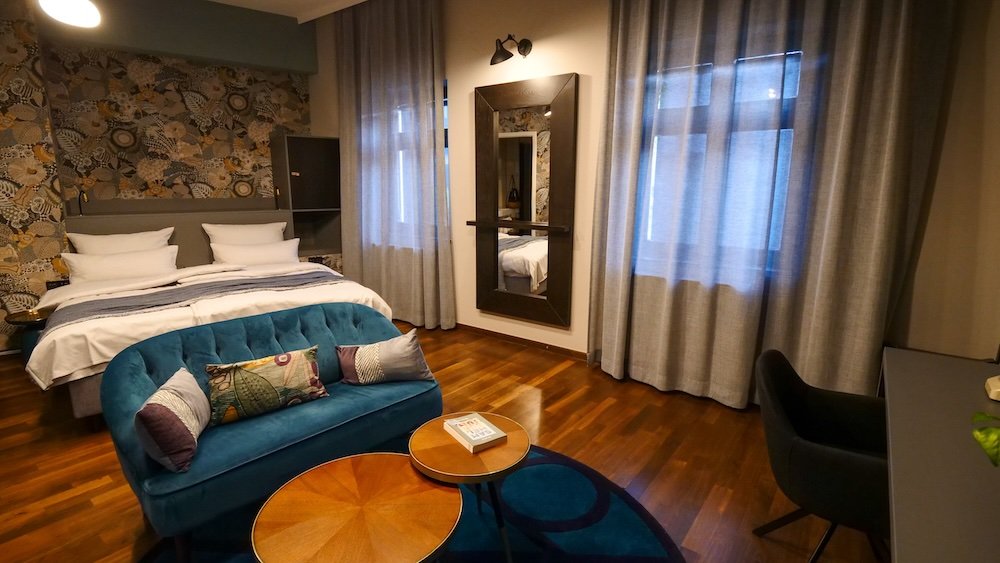
Berlin Accommodations Guide: Hotels, Guesthouses and Hostels
Choosing the right place to stay can make or break your Berlin experience. Thankfully, the city offers a wide range of things to do and equally diverse accommodations, from upscale hotels to cozy guesthouses and budget-friendly hostels. This travel guide section breaks down your main lodging options and what to expect from each.
Luxury and Boutique Hotels
For travelers seeking high-end comfort, Berlin boasts an array of luxury hotels in prime locations like Mitte or near the Tiergarten. Properties like the Hotel Adlon Kempinski or the Regent Berlin provide lavish rooms, fine dining, and amenities like spa services or rooftop terraces. Boutique hotels offer a similar level of comfort but often include unique designs or themes. Expect art installations, chic interior décor, and a more personalized vibe. While these choices come at a price, they envelop you in Berlin’s creative yet sophisticated ambiance.
- Pros: Top-tier service, central locations, and stylish settings.
- Cons: Higher costs, especially during peak travel seasons.
- Ideal For: Honeymooners, business travelers, or anyone ready to splurge.
Tip: Book midweek stays—weekend rates can spike due to events and conferences.
Mid-Range and Business Hotels
Mid-range hotels in Berlin often combine affordability with convenience. Chains like Motel One or Leonardo Hotels have multiple branches across the city, ensuring you can pick a neighborhood you love. Rooms are typically modern, clean, and well-equipped with free Wi-Fi and workspaces. These hotels often serve as a solid base if you plan to spend most of your day exploring Berlin’s things to do. They also cater to business travelers, offering meeting rooms and quick transit connections. Though less extravagant than luxury spots, mid-range hotels are popular for their consistency and value.
- Pros: Reliability, straightforward check-in, decent amenities.
- Cons: Fewer unique design elements, sometimes lacking local charm.
- Ideal For: Families, longer stays, or budget-conscious travelers seeking comfort.
Tip: Compare rates across different neighborhoods—sometimes a location slightly outside the city center offers better deals without major downsides.
Guesthouses and Pensions
For a cozier ambiance, consider a guesthouse (Pension). These family-run establishments tend to be smaller, offering fewer rooms and more personalized service. You might enjoy home-cooked breakfasts or insider tips on local eateries. Expect simpler furnishings compared to luxury hotels, but a warmth that can’t be replicated by big chains. Guesthouses are scattered throughout Berlin, including more residential areas like Charlottenburg or Wilmersdorf. If you prefer a slower pace and a chance to mingle with hosts, this option often feels like a home away from home.
- Pros: Friendly atmosphere, often include unique local insights.
- Cons: Limited availability, fewer upscale amenities.
- Ideal For: Couples or solo travelers wanting a personal touch.
Tip: Book early—the best guesthouses fill up quickly, especially in summer and holiday seasons.
Hostels
Berlin’s hostels range from party hubs to tranquil, design-focused spaces. Many offer both dorm beds and private rooms, making them versatile for different budgets. You’ll often find communal kitchens, lounges for socializing, and a youthful vibe. Some hostels in areas like Friedrichshain or Kreuzberg also host bar crawls, making them perfect for meeting fellow travelers. Security is generally good, but always opt for a hostel with solid reviews and lockers for valuables. If you’re comfortable sharing space, a hostel can slash accommodation costs and open up your budget for other adventures.
- Pros: Ultra-budget-friendly, social atmosphere, prime locations.
- Cons: Noise levels, less privacy, shared bathrooms.
- Ideal For: Backpackers, solo travelers, or groups of friends on a budget.
Tip: Read recent reviews—hostel reputations can change quickly based on new management or renovations.
Neighborhood Considerations
- Mitte: Central, historic sites, bustling shopping streets.
- Kreuzberg: Edgy, multicultural, dynamic nightlife.
- Prenzlauer Berg: Trendy, family-friendly, café culture.
- Friedrichshain: Young, vibrant, home to clubs like Berghain.
- Charlottenburg: Elegant, near the famous Ku’damm shopping avenue.
Tip: Choose your neighborhood based on your interests and the vibe you want—each district has its own character.
Day Trips From Berlin, Germany
Berlin’s cultural richness can keep you occupied for days. Yet, if you’ve got extra time, the surroundings offer a bounty of things to do that showcase Germany’s diverse landscapes and historic towns. This travel guide section covers five enticing day trips that will broaden your Berlin adventure without exhausting your itinerary.
1. Potsdam
Just a short train ride away, Potsdam dazzles with baroque architecture, sprawling parks, and the famous Sanssouci Palace—often dubbed the “German Versailles.” The palace’s terraced gardens, fountains, and ornate interiors offer a royal escape from urban hustle. Beyond Sanssouci, you’ll find Dutch Quarter’s red-brick houses, quaint cafés, and boutiques lining cobblestone streets. Potsdam also hosts various festivals throughout the year, celebrating everything from music to film. A day here can be as laid-back or culturally rich as you please. Trains depart frequently from Berlin’s central stations, making this trip a breeze.
- Travel Time: Around 40 minutes by regional train from Berlin Hauptbahnhof.
- Entry Fees: Sanssouci Palace and other royal sites may require combined tickets.
- Highlights: The New Palace, Cecilienhof, and strolls along the Havel River.
Tip: Book palace entry times online to avoid long lines during peak seasons.
2. Sachsenhausen Concentration Camp Memorial
For a solemn reminder of Germany’s darker chapters, Sachsenhausen is located just north of Berlin. The former concentration camp is now a memorial and museum that offers guided tours and informational displays. You’ll learn about the prisoners’ conditions, forced labor, and the camp’s role in the broader Nazi system of oppression. Though emotionally heavy, visiting Sachsenhausen provides essential context to Berlin’s and Germany’s past. It’s typically a half-day trip, with visitors taking an S-Bahn to Oranienburg, then walking or taking a short bus to the memorial site. Historical nuance is crucial, and the on-site exhibits offer ample detail to ensure respectful, informed exploration.
- Travel Time: About an hour via S-Bahn and a short walk.
- Admission: Free entry; guided tours may have a fee.
- Visitor Tips: Dress modestly and maintain a respectful demeanor.
Tip: Consider an audio guide or formal tour—the historical context is invaluable for fully understanding the site.
3. Spreewald
Nicknamed the “Green Venice,” Spreewald is a tranquil network of canals, forests, and charming villages south of Berlin. You can take a traditional punt boat ride, paddle a kayak, or cycle along scenic routes. Spreewald is also famous for its pickles—yes, pickles—so don’t miss a tasting if you stumble upon a local market. The region’s biosphere reserve status means it’s brimming with wildlife and unspoiled nature. This trip is perfect for families or anyone wanting a break from Berlin’s urban bustle, immersing yourself in the peaceful rhythms of rural Germany.
- Travel Time: Approximately an hour’s train ride to Lübben or Lübbenau, then bus connections.
- Activities: Boat tours, hiking, cycling, and sampling local cuisine.
- Cultural Insight: Traditional Sorbian communities, distinct language, and customs.
Tip: Visit in spring or summer to enjoy pleasant weather for outdoor activities.
4. Dresden
Located about two hours south of Berlin, Dresden is famed for its art museums and meticulously restored baroque architecture after WWII bombings. The Frauenkirche (Church of Our Lady) dominates the skyline with its grand dome. Stroll the cobblestone streets of the Altstadt, or cross the Elbe River to the Neustadt’s vibrant bars and bohemian vibe. If you love art, the Zwinger Palace houses incredible galleries, including the Old Masters Picture Gallery. Even a day trip can showcase Dresden’s blend of resilience, elegance, and modern creativity.
- Travel Time: Two hours by train from Berlin Hauptbahnhof.
- Key Attractions: Semper Opera House, Brühl’s Terrace, and the Green Vault.
- Seasonal Events: Dresden Striezelmarkt at Christmas is one of Germany’s oldest Christmas markets.
Tip: Check train schedules for special deals like the Länder-Ticket, which can be cost-effective for small groups.
5. Tropical Islands Resort
For a completely different vibe, Tropical Islands is an indoor waterpark and resort set in a repurposed airship hangar. Located about an hour south of Berlin, it brings a slice of the tropics to chilly Germany with its lagoon, sand beaches, and even a rainforest area. Families can enjoy slides, wave pools, and themed restaurants. If you’re craving a mini-vacation within your vacation, this is the spot to splash around without worrying about the weather. Some people stay overnight in on-site accommodations, but a day pass works fine if you just want a taste of sun and surf.
- Travel Time: About one hour by train plus a free shuttle bus.
- Amenities: Sauna, spa treatments, kids’ play zones, and multiple dining options.
- Planning: Book tickets in advance during school holidays or weekends.
Tip: Bring flip-flops and a light cover-up—the vast indoor space can still get chilly in some spots.

Berlin Transportation Guide
Berlin is a sprawling city brimming with things to do, yet navigating it can be surprisingly straightforward once you grasp the basics of public transport and local tips. Whether you’re in town for a short weekend or an extended stay, understanding your options can save you time and stress. This travel guide section breaks down trains, trams, buses, bikes, and more, ensuring you get around Berlin like a pro.
U-Bahn and S-Bahn
Berlin’s U-Bahn (underground) and S-Bahn (suburban rail) form the backbone of city travel. The U-Bahn runs mostly underground, covering 10 lines that crisscross neighborhoods. The S-Bahn complements this by running above ground and linking outer districts to central areas. Both systems share the same ticketing structure, divided into zones (A, B, and C). Trains are frequent—expect a wait of only a few minutes during the day, a bit longer at night. Pro Tip: Get a Berlin WelcomeCard for unlimited rides plus discounts on attractions if you’re staying multiple days.
- Peak Hours: 7–9 AM and 4–7 PM can be crowded.
- Night Service: U-Bahn lines run 24 hours on weekends; S-Bahn has partial night routes.
- Validation: Stamp your ticket at the platform machine before boarding.
Tip: Download the BVG app for live train times and route planning.
Buses and Trams
Buses fill in gaps where train lines don’t reach, while trams operate mostly in the former East Berlin. Tram lines are excellent for shorter hops in neighborhoods like Prenzlauer Berg or Friedrichshain. Double-decker buses (especially lines 100 and 200) can serve as de facto sightseeing tours, passing major landmarks like the Reichstag and the Brandenburg Gate. Late-night travelers will appreciate the extensive “Nachtbus” network when trains are less frequent. Fares are the same as U-Bahn and S-Bahn, making transfers seamless.
- Visibility: Schedules and route maps are posted at most stops.
- Payment: Single tickets are valid on all modes for a set duration (e.g., 2 hours).
- Etiquette: Offer your seat to elderly or disabled passengers.
Tip: Sit on the upper deck of the bus for panoramic city views—it’s like a budget-friendly tour.
Cycling in Berlin
Berlin’s flat terrain and growing network of bike lanes make cycling a top choice for locals and visitors alike. You can rent bikes from shops, app-based services (Donkey Republic, Nextbike), or even your hotel. Biking can outpace public transport for shorter distances, especially when you factor in the wait time for trains. However, do pay attention to bike lanes, traffic lights, and the strict right-of-way rules. If you’re new to urban cycling, consider quieter streets or parks like Tiergarten for a leisurely ride.
- Bike Lanes: Marked on many major roads—keep an eye on signs and colored paths.
- Parking: Lock your bike securely; theft can happen in busy areas.
- Weather: Berlin can be rainy—carry a light jacket or poncho.
Tip: Plan routes via a bike-friendly map or a navigation app set to cycling mode to find the safest paths.
Taxis and Ride-Sharing
Taxis are plentiful in tourist hubs like Alexanderplatz or Potsdamer Platz. Look for licensed cabs with a distinctive yellow and black “Taxi” sign. Alternatively, ride-sharing services like Free Now (formerly mytaxi) and Uber operate in Berlin, though the local regulatory environment can be strict. Fares can be higher than public transport, but if you’re in a group or short on time, taxis can be convenient. Rates increase late at night, and extra fees may apply for baggage or airport trips.
- Payment: Many taxis accept cards, but confirm before you hop in.
- Airport Surcharges: Some rides might include a flat-rate fee to or from airports.
- Availability: Taxis abound, but wait times can spike after large events or at nightclub closing hours.
Tip: Ask your driver for restaurant or sightseeing recommendations—they often know hidden gems.
Driving and Car Rentals
While Berlin is car-friendly in terms of broad roads and signage, parking in central areas can be a challenge. Plus, traffic congestion during rush hours is no joke. If you plan day trips outside the city, renting a car might be helpful, but within Berlin, public transport is typically more efficient. You’ll also need an Umweltplakette (environmental sticker) to drive in low-emission zones. Gasoline isn’t cheap, so factor that into your budget.
- Parking: Look for “Parkhaus” or “P+R” for safe, often paid parking.
- Traffic Zones: Environmental zones require special stickers.
- Car Sharing: Services like Share Now let you rent by the minute.
Tip: Avoid driving in the city center unless absolutely necessary—public transport is faster and more eco-friendly.
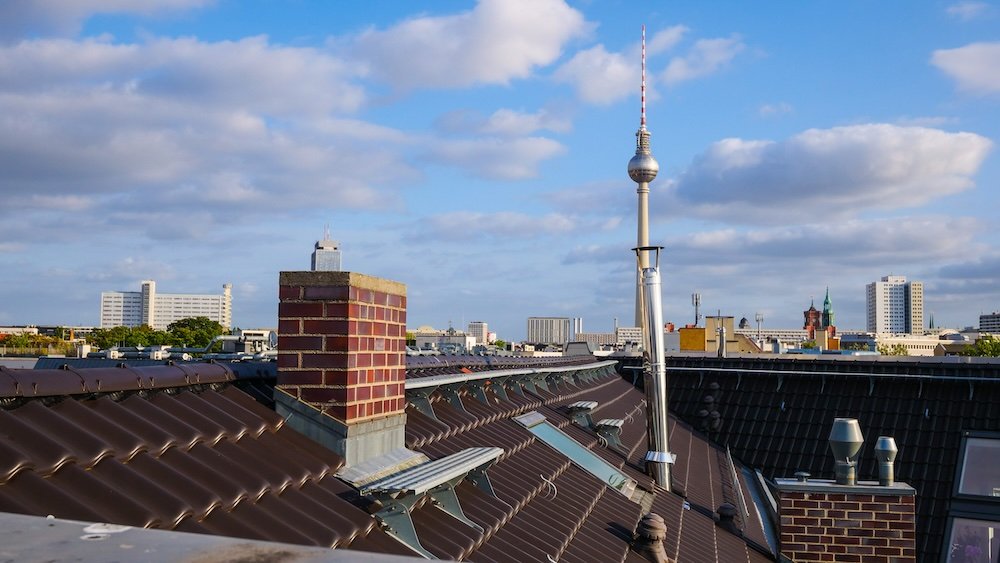
Berlin Travel Guide: Conclusion
Berlin stands as a city of contrasts—where centuries of history meet a lightning-fast pace of cultural innovation. It’s a place that refuses to be pigeonholed, melding old and new in a single cityscape. At times, you might find yourself marveling at grandiose cathedrals, and just a few blocks away, you’ll stumble upon gritty street murals alive with political commentary. This dynamic blend invites you to dig beneath the surface, exploring more than just the usual tourist hotspots. If anything, Berlin rewards curiosity. The more you push beyond your comfort zone, the richer your experiences become.
We’ve highlighted a range of things to do, from wandering Museum Island’s storied halls to sharing a beer flight at a local craft brewery. We’ve also covered the must-try dishes, tours that enrich your understanding, and day trips that showcase Germany’s broader wonders. Hopefully, this travel guide has given you a solid roadmap, so you can navigate effortlessly and savor every moment. But remember, it’s perfectly okay to let spontaneity lead you. Some of Berlin’s most magical moments arise when you follow an inviting aroma down a side street or strike up conversation with a friendly local at a café.
Final Thoughts
While Berlin is remarkably accessible, the city has its quirks. You might encounter shops closing on Sundays or the occasional protest march that disrupts your plans. Embrace the unexpected—these surprises often form the stories you’ll later share. Remember to keep some euros on hand, as cash remains king in many restaurants and bars. And don’t hesitate to branch out into the lesser-known neighborhoods. A quick ride on the U-Bahn can land you in corners of the city that feel like entirely different worlds.
Above all, let Berlin show you its many faces. Stroll by the remnants of the Wall and imagine the city once divided. Then dive into modern neighborhoods humming with fusion cuisine and avant-garde galleries. Seek out the tranquility of its parks before reveling in a late-night techno club if that’s your scene. Or sip a meticulously crafted latte in a tiny coffee bar tucked away behind graffitied walls. Each setting offers a new lens on a city that’s constantly in flux, yet always anchored by its rich heritage.
In the end, Berlin’s essence is in its freedom. Freedom to explore, to create, to question. It’s in the thousands of repurposed buildings transformed into community centers or art collectives. It’s in the markets that celebrate global flavors, reflecting the city’s multicultural population. When you tap into that spirit of openness and adventure, you become part of the city’s narrative. That, more than any landmark, is what will leave an imprint long after you’ve gone.
